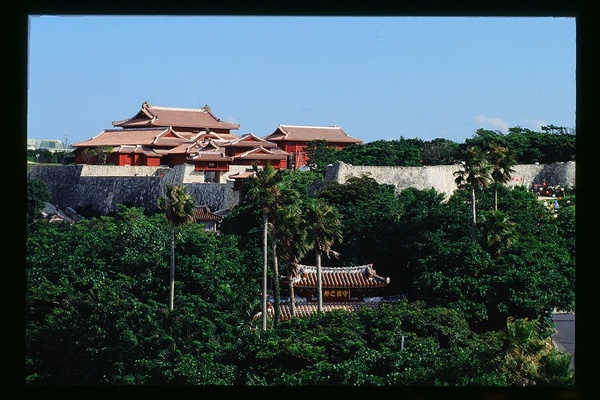Shuri-jo Site (Shuri Castle, A World Heritage)
Historic sitesHistoryWorld heritage



It is the largest royal castle of the Ryukyu Kingdom. Before the war, the main hall was certified as a national treasure. The castle was destroyed in the Battle of Okinawa. After the war, the University of the Ryukyus was built, so now only the few remaining parts of the foundation of the building walls are a World Heritage Site. You can walk for free through the restored “Kankai-mon gate” “Zuisen-mon gate” “Rokaku-mon gate” “Koufuku-mon gate” “Shichyanu-una” and “Suimui-utaki.”
Basic information
- Address
- 903-0815 3-1 Tounokuratyou Shuri Naha Okinawa In Shuri Castle Park
- TEL
- 098-886-2020 Okinawa churashima foundation Shurijo Castle Park Management Center
- Business hours
- April - June 8:00 - 19:30
July - September 8:00 - 20:30
October - November 8:00 - 19:30
December - March 8:00 - 18:30 - Close day
- None
- Charge
- Free
- Parking
- Toll parking
- Access information
- Take the "Yui Rail" from Naha Airport. Get off at Shuri station. A 10-minute walk away. Take the city bus line number (1, or 17), or outside city bus line No. 46, get off at the Shurijo-kouen Iriguchi bus stop, and walk about 5 minutes to arrive at the Shurei gate.
Take the number 8 bus Shurijo Shitamachi line, get off at Shurijo-mae and walk about 1 minute to arrive at the front of the Shurei gate.
Take the city bus number 9, or number 25 line, and get off at the Yamakawa bus stop, about a 15-minute walk to the Shurei gate. - URL
- http://oki-park.jp/shurijo-park/english/index.html
Additional Information
- Barrier-free
- Academic information
- A World Heritage Designated Date: February, 2000
Cultural property(National designated historical site) Designated Date: May 15, 1972
The legend said that Shuri Castle was established by Tenson-shi, who built the Ryukyu Kingdom, was expanded in Shunten Dynasty (1187 to 1237), and a high building called “Takasayouri” was constructed in the Satto Dynasty (1350 to 1395); however, the detail of its origin is unknown. Shuri Castle flourished from the unification of three kingdoms by Sho Hashi in 1406 to 1429 until the last king of the Ryukyu Kingdom, Sho Tai was ousted by the Meiji Government in 1879.
Around the time when Sho Hashi took the throne in 1422, Ryutan pond was constructed. In 1427, Ankoku-zan (Hantan-zan) was mounded. The development inside and outside of the castle suggests that, by this time, Shuri Castle was located where it remains today. Since then until the Abolition of Feudal Domains and Establishment of Prefectures in 1870, the castle was the residence of the kings of Ryukyu.
The castle area is 400m east to west and 270m north to south, about 62,000sq m, centered near Seiden (Main Gate), whose eastern side is called “Uchi (Inside)” and is the private area of residence of the kings. The western side is called “Omote (Front),” centering Una Court, surrounded by Hokuden (North Hall), Nanden (South Hall) (constructed after the invasion by the Satsuma clan), and Hoshinmon Gate, and functioned as the place for national ceremonies and events including sappo (investigation) and politics. Also on the southwest corner was a sacred area called “Kyonouchi.”
The castle is doubly framed by external castle walls on the northwest side and the southeast side from the reins of King Sho Shin and King Sho Sei (1477 to 1555), Kyukei-mon Gate, Kankai-mon Gate and Keisei-mon Gate were constructed on a concave surface forming part of the walls. The castle walls have a defense function like berm, called mushabashiri, so that people could pass through.
The facilities such as the residence of kings and the place for national ceremonies, events, government, and administration, were united into one with a strong influence from the Forbidden City of China. The castle had characteristically different from other castles in Japan. - Quote
- Naha Board of Education Cultural Heritage Division (2007) "Naha Cultural Property" Naha Board of Education
